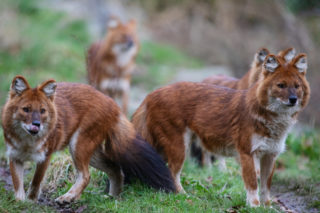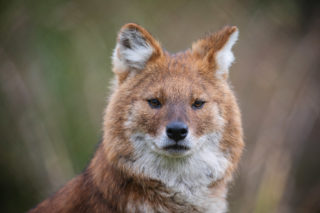Fun Facts
The whistling dog
Dholes produce unusual whistling calls to identify each other when the pack is scattered, allowing them to reassemble the pack. The sound waves produced by the whistles travel well at ground level and are easily located. Whistling allows the dholes to maintain their pack bond when moving through dense forests or grasses where visibility is low, especially during a hunt. Dholes are sometimes called ‘whistling dogs’ because of this.
Vocal bunch
Dholes have a broad variety of calls, including yaps, squeaks, screams, whines, growls, mews and chatters. Scientists believe that some of these calls have evolved to intimidate opponents and warn pack members of dangers such as tigers, leopards and humans.
Fewer teeth, more meat
Dholes have two fewer molars (large, flat teeth at the back of the mouth) than other canine species. Also, they only have one cusp on the first two molars in their lower jaw, unlike other canine species that have two cusps on those teeth. Scientists think that these features help dholes cut and eat meat faster, reducing the risk of other animals stealing their food. In fact, dholes can eat 1kg of meat in four minutes!
Ambush!
Dholes rarely hunt their prey to exhaustion as their grey wolf relatives do. Instead, they often use ambush tactics. During a hunt, a few dholes drive their prey towards hunting mates that are lying hidden in an ambush. Dholes also drive their prey into water to tire them out and stop them from kicking. The use of water during hunting is highly unusual for canine predators.


